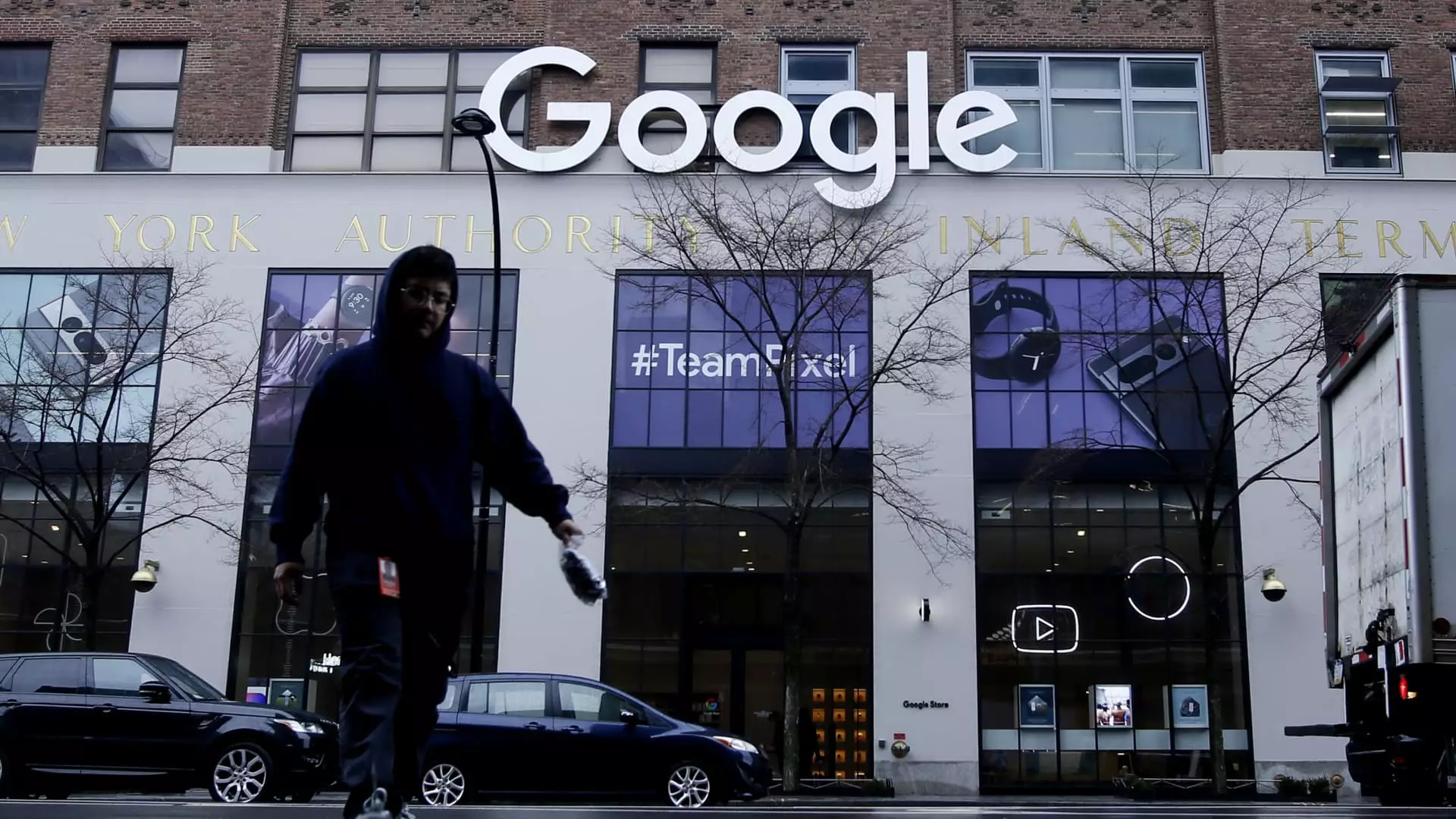The world of finance is characterized by constant fluctuations, particularly following corporate earnings announcements. Investors meticulously analyze the financial results released by major companies, impacting stock prices and market sentiment. This article delves into several prominent firms whose after-hours performances recently captured significant attention, revealing the intricate dynamics at play.
Alphabet Inc., Google’s parent company, faced a notable dip in its stock price, which fell by 7.4% post-earnings announcement. The tech giant reported a fourth-quarter revenue of $96.47 billion, which unfortunately did not meet the analysts’ expectations of $96.56 billion. This discrepancy speaks volumes about market sentiment and the crucial nature of revenue forecasts in assessing a company’s health. While Alphabet’s earnings per share (EPS) of $2.15 did manage to exceed the consensus estimate of $2.13, the revenue miss overshadowed these positive earnings, illustrating how fundamentally revenue growth drives stock performance. This alludes to a broader market paradigm where operators prioritize top-line growth as a crucial metric for ongoing viability.
In the restaurant sector, Chipotle Mexican Grill experienced nearly a 5% drop in its stock due to lukewarm fourth-quarter results. The burrito chain reported an increase in same-store sales that fell short of expectations while forecasting only low- to mid-single-digit growth for fiscal 2025. Despite adjusting its earnings to 25 cents per share on $2.85 billion in revenue—slightly in line with expectations—the cautious growth outlook indicates potential struggles ahead. Investors appear wary, underscoring how uncertain growth projections can prompt significant market reactions, even when short-term numbers look acceptable.
Contrastingly, Electronic Arts (EA) saw a marginal increase of 1% in its share price despite reporting earnings that failed to meet overall expectations. The company recorded earnings of $1.11 per share on net bookings of $2.22 billion, which markedly missed the optimistic forecast of $3.07 per share and $2.32 billion in revenue projected by analysts. This divergence raises intriguing questions about investor sentiment. It suggests that the market may have already factored in a level of optimism, leading to a muted response to less-than-stellar results, thus emphasizing the complex interplay between investor expectations and actual performance.
Advanced Micro Devices (AMD) faced a substantial share price decline of 4%. While the semiconductor firm reported adjusted earnings that met expectations, its data center revenue of $3.9 billion fell short of the anticipated $4.14 billion. This situation illustrates a common theme in tech: even companies performing well overall can see declines due to specific segments underperforming. Investors may have reacted psychologically to the missed estimate, showing how individual business segments can heavily influence overall stock sentiment.
In stark contrast, Lumen Technologies enjoyed a remarkable surge of 8% in its stock, fueled by robust earnings that surpassed expectations across several metrics. Reporting adjusted earnings of 9 cents per share on $3.33 billion in revenue, the company defied analysts’ predictions of a loss per share. Such a turnaround signals the trust investors are placing in Lumen’s strategy amid a turbulent telecommunications landscape, underscoring the potential for considerable upward momentum when a company exceeds forecasts significantly.
On the food and beverage front, Mondelez International’s stock dropped nearly 4% following a revenue shortfall. The company reported relevant metrics that fell short of analyst expectations, alongside a dismal outlook for 2025 due to unprecedented cocoa cost inflation. Such price pressures reflect broader concerns within the industry, highlighting how commodity costs can negatively impact even established brands.
In a more positive light, Mattel’s stock rose 9% after it beat earnings predictions decisively, generating excitement around its financial health. Similarly, Snap’s impressive fourth-quarter results led to an 8% increase in its stock price, marking a positive investor outlook after consistently struggling in previous periods. Both companies’ performances suggest that strong earnings can significantly buoy investor confidence, even amid a generally cautious economic landscape.
The stock market’s reaction to earnings reports embodies a complex interplay of investor sentiment, performance metrics, and future outlooks. The fluctuations seen across these companies underscore the criticality of revenue as a focal point for shareholders. As we continue to monitor earnings reports and their implications, it becomes increasingly clear that investors must remain attuned to contextual factors rather than merely short-term results. This intricate dance between earnings performance and stock market reactions remains a cornerstone of financial analysis and investment strategy.

